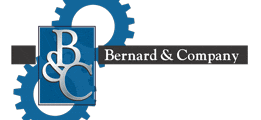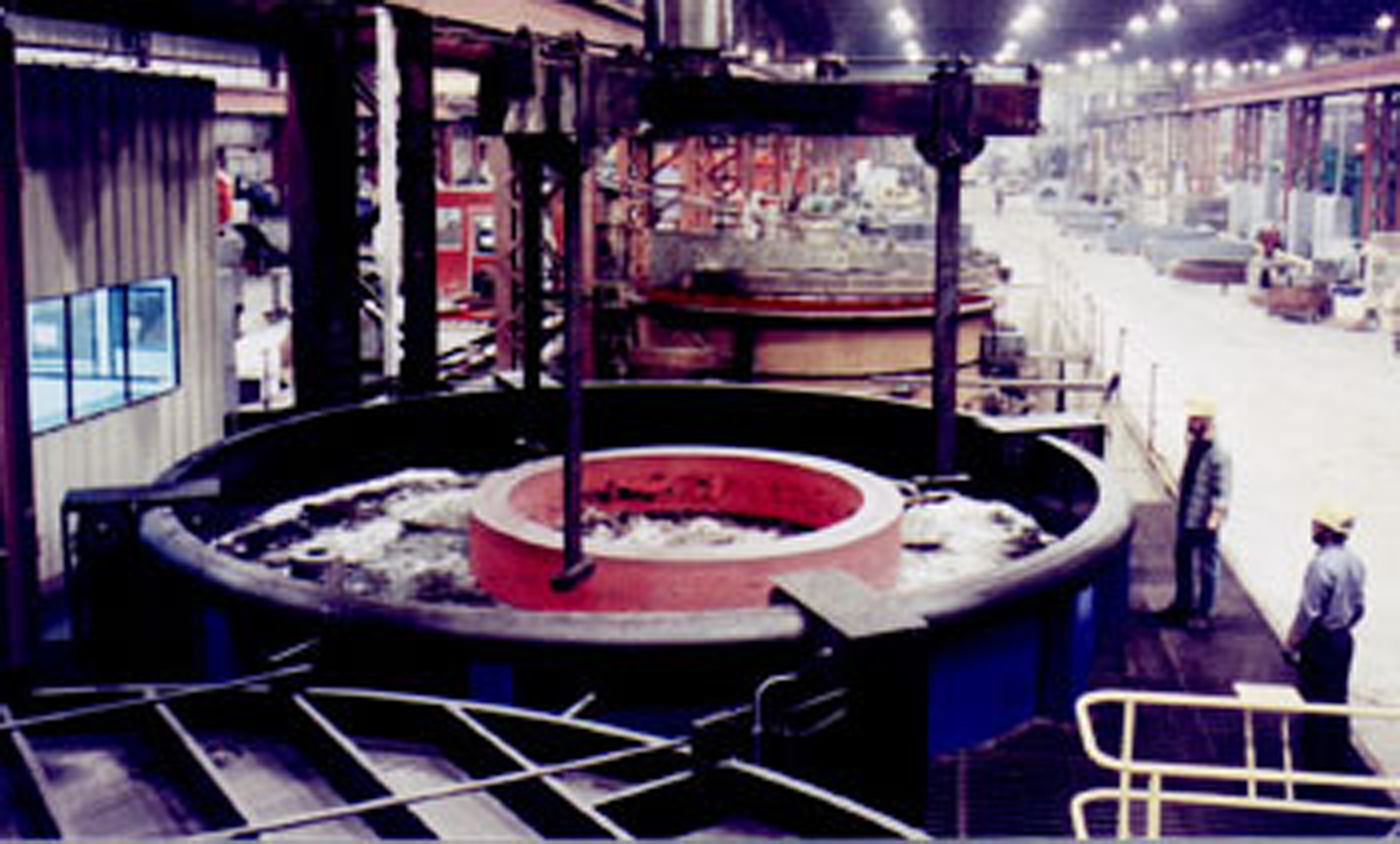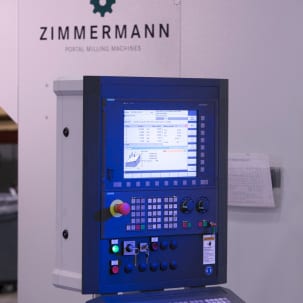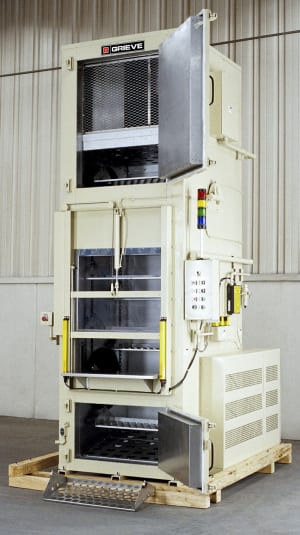Contact us today:

(847) 934-4500
tdaro@bernardandcompany.com

Contact us today:
(847) 934-4500
tdaro@bernardandcompany.com
Advanced Machine & Engineering Co. (AME) will be exhibiting their machine tool component products in both the East and West buildings this year at IMTS 2014. In the West building, at booth W-2405, they will be showing their fixturing product lines under the Amrok brand name, which consists of the following products:
• Amrok Epoxy-mineral Tombstones
• Amrok Cast Iron Tombstones
• Triag Modular Workholding
• Jakob Clamping
Click here to add AME to your IMTS Show Planner!
In the East building, at booth E-5718, they will be showing the remainder of their product lines consisting of the following products:
• Amlok Rod Locks
• Ott-jakob Power Drawbars
• Stotz Air Gaging
• Spieth, Ambush & Amdisk Precision Components
• Ott Gears
• Sitema Press Safety
• Amsaw Carbide Production Saws
Click here to add AME to your IMTS Show Planner!
Also see their sister company Hennig Inc. for machine protection products at booth E-5610.
Click here to add Hennig to your IMTS Show Planner!
For more information, visit www.ame.com or contact:
Tim Waterman
ADVANCED MACHINE & ENGINEERING CO.
2500 Latham St.
Rockford, IL 61103
Phone: 815-316-5277
Fax: 815-962-6483
E-mail: info@ame.com
Connect with AME online:
Hennig Inc. will be exhibiting their machine protection products at IMTS 2014. In the East building, at booth E-5610, they will be showing the following products:
• Chip Conveyors
• Chip Disc Filtration (CDF) Systems
• Telescopic Steel Covers
• Folded Bellows
• Flex-Protect Systems
• Machine Enclosures
• Roll-up & Flexible Apron Covers
• Wiper Systems
• XYZ-Modules
Click here to add Hennig to your IMTS Show Planner!
Also see their sister company, Advanced Machine & Engineering Co., at booths W-2405 and E-5718 for machine tool component products.
Click here to add AME to your IMTS Show Planner!
For more information contact:
Tim Waterman
Hennig Inc.
9900 N. Alpine Rd.
Machesney Park, IL 61115
(815) 316-5277
info@hennig.ame.com
www.hennigworldwide.com
Leading supplier of quenchants to commercial and captive heat treaters will also display assortment of Chemtool lubricants and greases for the industry

Photo courtesy of Scot Forge
Pioneers in the development of polymer quenchants back in the 1960’s, Tenaxol, part of the Chemtool family of companies in Rockton, Illinois, will demonstrate its comprehensive line of UCON® brand polymer quenchants at this year’s Furnaces North America show, being held October 6-8 in Nashville, Tennessee. Tenaxol will be located in Booths 300-302 at the show.

Photo courtesy of Scot Forge
Polymer quenchants were developed by Ross Blackwood, the founder of Tenaxol, in the early 1960’s and the first UCON® products were patented in 1965 as a safe alternative to oil quenching, owing to their unique polyalkylene glycol chemistry plus corrosion inhibitors. The products also yield superior surface integrity on all ferrous and non-ferrous metals, when compared to water quenching, especially in the areas of thermal cracking and distortion. UCON® brand polymer quenchants have become the industry standard over the years and the full range of products today includes UCON® ULTRAQUENCH PLUS, featuring advanced anti-microbial protection and enhanced foam control, plus a non-nitrite corrosion inhibitor for improved surface protection. Additionally, UCON® ULTRAQUENCH RL PLUS is an ideal solution for quenching medium high-carbon steels and most alloyed grades, including 300 and 400 Series stainless.
Chemtool is a global leader in the formulation and supply of various lubricants, cleaning agents, cutting fluids for metalworking machinery and other solutions for a wide variety of industrial applications.nThe company is also a major private label supplier to the distribution channels at many of the giants in the off-highway and other machinery markets.

Tenaxol has factory sales based in the Rockton, Illinois headquarters, near Chicago, plus manufacturers’ representative offices in strategically located cities throughout North America.
For more information, please contact:
TENAXOL TECHNOLOGIES
A Chemtool Company
801 West Rockton Road
Rockton, IL 61072
Phone: 815-957-4140
Web: www.chemtool.com
Email: sales@chemtool.com
Attention: Jim Harrison

We did it for Mother’s Day, and now it’s dad’s turn. They’ll make you laugh, they’ll make you cry, they’ll make you appreciate dad more than ever before!
Here’s a collection of the best commercials/videos celebrating dads:
American Greetings – The Dad Life Rap
And here’s a little extra:
25 Absolute Greatest Dad Jokes of All Time
** Happy Father’s Day!! **
Do you have must-see commercial to add?? Share the link in the comments below!
Continue readingMajor manufacturer of tube and bar processing machinery Rattunde today announced the appointment of the following individuals to new positions at the company, based in Caledonia, Michigan, near Grand Rapids. This announcement was made by company president Rick Stadler.
The new staffers include:

Chad has been a member of the IBEW (International Brotherhood of Electrical Workers) for 10 years and is also a Certified Master Electrician. Chad will be training new and current customers as well as commissioning new machines in the field. His other duties will include handling the customer help line and assisting the service team.

Janelle was brought onboard to fill a wide spectrum of duties. She will be responsible for pre- and post-sales communications between customers and internal resources, plus the planning and scheduling of machine installations. Janelle was an executive assistant for the past 3 years and has spent time in both inside and outside sales.

Will was hired by Rattunde to handle multiple functions. His primary duty will be to help maintain the Rattunde customer relationships that have been generated over the last 8 years in North America. A further reason he was hired is to help with market research, assisting Rattunde in its expansion into new markets. A third area of responsibility will be marketing. Will has a sales background, having worked the last 9 years in the automotive industry, selling components.

Carlos, who is fluent in Spanish, was hired for inside sales to support the Mexican and Latin American markets Rattunde currently sells and seeks to develop further. Carlos is responsible for quoting and fulfilling tooling and spare part orders for all North American customers, with special emphasis on the Mexican and Latin American companies. Carlos was previously in logistics.
For more information on this development, please contact:
RATTUNDE CORPORATION
4980 Kendrick Street SE
Grand Rapids, Michigan 49512
Phone: 616-940-3340
Fax: 616-940-2771
Web: www.rattunde-corp.com
Email: company@rattunde-corp.com
Attention: Richard Stadler or Alec Banish

This Grieve vertical conveyor oven features 4” insulated walls, top-mounted heating chamber, aluminized steel interior and exterior, air-operated lift door at the loading/unloading position, two access doors for the heating chamber and floor of the workspace plus eleven workload trays, each 30” wide by 14” long, supported on each side by heavy-duty roller chain driven by a ½-HP motor controlled by a variable frequency drive.
The oven is built to JIC/NEMA 12 electrical standards. Controls on No. 957 include a digital indicating temperature controller, manual reset excess temperature controller with separate contactors, recirculating blower airflow safety switch and a tower light to indicate oven status.
For more information, please contact:
THE GRIEVE CORPORATION
500 Hart Road
Round Lake, IL 60073-2898
Phone: (847) 546-8225
Fax: (847) 546-9210
Web: www.grievecorp.com
Email: sales@grievecorp.com
Attention: Frank Calabrese, VP
Ann Arbor, Michigan – GMTA (German Machine Tools of America) represents various top-quality German metalworking machine builders, including Profilator, Pittler, Praewema and WMZ. These machines are sold to the North American market by GMTA primarily for gear and spline production, as well as other power transmission applications. The company’s target markets include automotive, off-highway, OCTG and other heavy equipment manufacturing. Machines are provided for gear honing, gear grinding, the patented Scudding® process for gearmaking, polygon milling, turning, gear tooth pointing and multi-task machining operations.
In the news…
-Effective immediately for North America, GMTA now represents two additional lines of quality German machines. Agreements have been finalized for GMTA to handle the Rosink line of parts washers plus the Arnold line of laser welding machines. According to Scott Knoy, VP at GMTA, “These are natural complements to our existing lines and will strengthen our value proposition in current and also new market segments, going forward.” A Rosink parts washer will be on display in the GMTA booth during the upcoming IMTS in Chicago.
-GMTA proudly announces the sale of multiple Profilator Scudding® machines to General Motors for gear production. It is estimated this purchase saved GM over $4 million in capital expenditures, compared with acquiring the multiple machines that would have been necessary to achieve the same production levels.
-GMTA also announces the sale of Profilator Scudding® and gear pointing machines to Magna Mexico, plus machines to Magna Canada for polygon generation.
-GMTA has sold nine (9) Praewema honing machines to Ford.

Claudia Hambleton, GMTA administrative manager and corporate treasurer, at her MBA graduation ceremony at Eastern Michigan University in Ypsilanti
-Last but not least, by any means, GMTA proudly announces Claudia Hambleton, corporate treasurer and administrative manager, received her MBA from Eastern Michigan University (EMU) on April 27, 2014. Claudia has been a GMTA associate since the company opened its doors in January, 1991. As Claudia notes, “I am very grateful to GMTA for supporting my efforts to acquire an MBA. I look forward to using my new skills to further enhance the business at our company. It was also very rewarding to network with the business school students and staff at EMU, where GMTA now has a working relationship with their German business development track.” GMTA routinely hosts a program in German for students in the EMU business school who plan to work for or with German companies as a career path.
For more information on this announcement, please contact:
GMTA (GERMAN MACHINE TOOLS OF AMERICA)
4630 Freedom Drive
Ann Arbor, MI 48108
Phone: 734-973-7800
Fax: 734-973-3053
Web: www.gmtamerica.com
Email: scott@gmtamerica.com
Attention: Scott Knoy
Connect with GMTA online:
Advanced Machine & Engineering Co.
AME is taking it to the next level with Inbound Marketing + Social Media + CRM + Tradeshows.
Advanced Machine & Engineering Co. (AME) has achieved manufacturing excellence over the last few decades by providing some of the highest quality machine tool component products and services the market has to offer. Now, we are taking the next steps to improve our business and increase our market share even more. It hasn’t always been easy getting from where we were nearly 50 years ago to where we are now. But we can honestly say the hardest parts are behind us. You can only improve products and processes so much before there is little to no room left for improvements. Although we will continue to innovate further, we have successfully neared that point in our manufacturing processes for a few reasons.
First, we have implemented lean thinking principles which allow us to operate with less unnecessary expenses, for example, excess inventory and waste. Second, we have become a continuous improvement…
Continue readingIs there a better way to celebrate and honour Mother’s Day than to make you weep uncontrollably at your office desk?

Olympics P&G – Pick Them Back Up
Publix – Mother’s Day Commercial
Video – Parents Announce New Baby; Daughter Has Best Reaction. Ever.
And then there’s this one. Disclaimer: this commercial is incredibly creepy. But also hilarious.
** Happy Mother’s Day!! **
Do you have must-see commercial to add?? Share the link in the comments below!
Continue readingby Gerhard Flores, Andreas Wiens, Oliver Stammen
Download the PDF HERE.
Summary
The possibility of position correction with high precision and material removal of up to 0.350 mm in 18 s puts the single-machine honing of transmission gears and other components firmly in the forefront of current automotive manufacturing technology. Despite very high cutting performance, the low machining forces and temperatures enable the lowest marginal zone variances and high residual compressive strength. The surface roughness with a high material content in low cutting depth and the hone angle structure have a positive tribological effect on the sliding function of the gear.
An additional innovative manufacturing strategy is the use of machines for combination machining. This fact is especially advantageous in the machining of planetary gears. Here, the process of flat finishing, ID grinding and honing are systematically combined in a single machine, as detailed in this presentation.
Introduction
The honing of gears, by definition, facilitates ease of operation, low noise and smoother performance in a transmission. Honing also contributes to reduced friction in the powertrain. Both the intense cutting (roughing process) as well as the functionally fine finishing of transmission gears can be performed in one setup, on one machine. Honing in mass production is a well-established process, owing to the intelligent machine layout and other combinations with defined cutting geometries. It should be technologically and economically considered as a serious production method. Furthermore, the combined process of flat surfacing and honing on one machine is a further recent innovation for the finish machining of planetary gears in mass production.
The design of components for modern vehicle transmissions such as manual, automatic or dual clutch styles seeks to reduce friction, thereby increasing gear efficiency in addition to function. Therefore, for the gear bores of various active transmission components and planetary gears, there is the requirement for low-friction and wear-resistant contact topographies. Also, there is the desire for economical finish machining of the bore in one process, whenever possible.
The finish machining of transmission components in mass production is currently being done using rough honing and finish honing. In one process, consisting of two steps on one machine, the functionally accurate shape and position tolerances, as well as the desired surface structure, can be achieved. Therefore, secondary hard turning and grinding processes are seldom required as finish processes in mass production, neither individually nor as combined processes in a work cell.
The diverse quality characteristics require an adjustment to individual process components of honing. The manufacturing quality of the conventional hone process is defined by the terms “dimensional tolerance” and “surface finish.” Furthermore, for the function of gear wheels, the quality terms “axial run-out” and respectively, “perpendicularity” and “radial run-out” (out of round) are relevant. If one also wants to use honing for the finishing of gear wheels, the process of these broadened quality terms is modified accordingly.
Function and Quality
The bore in a transmission component functions as a rotary and translational slideway. The tolerances are selected accordingly. The honed topography with high material mass benefits the frictional behavior and homogenizes the application of force. The honed surface profile with a large topographical contact surface enables a stabilization of the lubricating film, when mixed friction occurs. The loaded contact surfaces have a high adhesion for the gear oil, which prevents a breakdown of the lubricating film on the contact surfaces. This acts to reduce friction and minimize wear in the switched condition with high system pressure on the contact surfaces as well as the unloaded rotating idler. Also, the hone angles contribute to the even distribution of the lubricating oil in the lengthwise and circumferential direction of the bore.
In order to avoid local high surface pressures, there are also tight shape and position tolerances of the required macro-geometrical conditions for equal lubrication gap widths. The tight geometrical tolerances (axial run-out) and radial run-out have a positive effect on the smooth operation of the gear wheel sets. This is the purpose of the statistical tolerance limits. At a machine capacity of cmk 1.33, for example, the straightness is reduced from 3 µm to about 2.1 µm, despite very different wall thicknesses.
Honing involves the boring of gear wheels (such as planetary gears, transmission gears, switching sleeves, layshaft gears, bevel gears) of various shape, dimension, material and hardness. Honing of transmission gears goes beyond the previous quality terms. The following tolerances can be defined (Tab. 1):
In addition to the geometric tolerances, highly stressed components are increasingly evaluated according to the marginal zone of the functional surface. The mechanical and thermal stress of the material due to the machining forces during the final machining steps contributes to the microstructure in the area near the surface. Here, there are significant differences between the process used and the finishing operation. The honing process is one operation with comparatively low machining forces and temperatures. The conditions for developing a lasting, highly durable marginal zone are therefore especially advantageous with honing. Therefore, hardened parts are also the subject of material testing in terms of compressive stresses that positively influence the fatigue strength of highly stressed bore surfaces [1].
Honing Control Wheels – Machining Principle
An important feature of honing is the alignment of the tool axis and bore axis. In the conventional layout of tool and part, the expansion of the tool results in an equiaxial alignment. The tool-part system has designated degrees of motion freedom which enables the centering and tipping up to identical axis position. An improvement in dimension, shape and surface quality is achievable with this mechanical system.
If the position of the bore needs to be corrected, that is, the perpendicularity of the bore axis to the front face or the axial runout of the front face to the bore axis, the angular degree of freedom (tilting) must be replaced by a rigid perpendicular positioning of the tool axis and clamping surface [2]. The reference surface for honing is the machined front face, which is supported on the clamping level (Dia. 1). Centering on an inaccurate gear tip circle diameter is not necessary.
As a result, the center of the gear wheel bore can align itself to the tool via the floating part holder. Due to this condition, the radial run-out (bore to gear teeth) remains unchanged. The deviation of the angle position of the bore axis to the tool axis is corrected in the subsequent material removal. Next, the tool machines the raised areas of the lateral surface. With the additional clamping, the entire bore is machined and a new bore axis is established.
Honing Transmission Components – Machining Concept
The common principle among the various possibilities for gear wheel machining is the moveable part holder and the rigid tool holder. Also, the conventional honing process with adjustable honing stones has been carried through. For honing such components, vertical rotary indexing machines with the single part holder in floating fixtures are used (Tab. 2).
The preparation consists, as a rule, of boring and hardening, so that they must be machined in two honing operations. The tools are exclusively loaded with CBN-abrasives. Furthermore, fully automated production honing machines are equipped with various standard components such as gage stations, handling systems, force-controlled electromechanical feed devices (EMZ-F) and electromechanical ballscrew stroke drives.
Honing Transmission Components – Requirements and Process Considerations
Because honing of hardened gear wheels has undergone major development in the past few years, this illustration is presented simply as an example. The hardened gear wheels are mainly machined on fully automatic, multiple spindle, rotary indexing honing machines. The machining concept for individual machining consists of conventional multiple stone tools. The attachments are designed to be interchangeable for various gear wheels. Honing a gear wheel bore is defined by the following quality terms and tolerances (Tab. 3):
The high stock removal during rough honing with a honing allowance of up to 0.350 mm is the prerequisite for the successful implementation of the honing process in the mass production of gear wheels. This is how honing maintains its competitiveness compared to hard turning. The smoothing of the surface end quality takes place in the 2nd machining station only by changing the cutting material and adjusting the process parameter. The radial run-out achieved in pre-machining should remain unchanged.
The layout of a machine for machining gear wheels shows the stations named in Table 2. After the load and unload station, the mechanical pre-gaging is performed. Here, the minimum dimension of the bore is checked, in order to prevent a collision with the tool. Rough honing works with robust parameters, especially with high cutting speed of about 150 m/min and large removal rates of about 20-30 µm/s in diameter. The subsequent finish honing operation completely removes the rough profile of the rough honing operation and leaves behind the functional component quality (Dia. 2). Pneumatic post-gaging is the final quality assurance; spinning the gear minimizes the spreading of the honing oil.
The machining parameters are summarized in the following table (Tab. 4).
The high removal rate is primarily determined by the high delivery rate and high cutting speed. With increasing rpm, a rise in material removal is clearly noticeable (Dia. 3). The mathematical removal characteristic is determined by the feedrate, i.e., by the diametric preset diametrical honing stone feed per unit of time. The difference between calculated and measured stock removal results from feed losses caused by deflecting the components in the complete feeding system. The increasing deviation from about 1500 rpm is explained by an increase in coolant flow at increased rpm. The influence of the stroke speed in the area examined in not significant. Because of the material properties and the high cutting capacity, the rough honing operation produces less fine-grained hone sludge. Instead, fine, long continuous chips in the form of a steel wool ball result.

Dia. 3: Correlation of rpm and stock removal (control wheel diameter 35 x 26 mm, forged steel, 680 HV30, hone time 18 s, L600 honing machine)
The function of CBN-abrasives of a middle concentration (stock removal 0.300 mm in 18 s) is decisive for the entire process. The use of low viscosity honing oil ( = 4.6 mm²/s) has a positive effect on the cutting behavior and, thereby, on the consistent manufacturing quality and tool life. In addition to the constructive design of the hone tools, the condition of the abrasives is of vital importance. They are composed of a metallic binder, fused with the proper concentration of CBN-abrasive crystals (Dia. 4). Apart from the selection of binder and grain material, the sinter parameters in the manufacturing process of honing abrasives determine the quality. The hone tools are rigidly connected to the spindle. Below the part, the tool body is formed as a carbide reinforced guide shaft. The tools, depending on design feasibility, have as many abrasives as possible. This improves the machining accuracy with regard to dimensional stability and increases cutting performance and tool life.
The individual processing with conventional abrasive tools is the most economical variation of gear honing. The stationary fixtures are arranged under the two hone spindles. With the rotary index movement, the gears are loaded into the fixture. The fixture consists of the floating part holder and the zero-clearance hold-down device (Dia. 5). The part is situated on one of the flat sides of a moveable pallet. The hydrostatic friction bearing of these pallets enables effortless but not undamped movement on the flat. A torque recorder in the gear teeth has been proven effective. This occurs by means of the insertion of the gear into an integrated switch sliding sleeve or by applying a safety catch. The zero-clearance hold-down to accept the upper facing axial force helps with the deformation-free fixation of the gear. The lower guide stabilizes the tool axis to the clamping level at a right angle.
The described process design can reliably achieve the required tolerances. The roughness and the axial run-out are not statistically evaluated here. With the finish hone stones (B46), the Rz-value amounts to about 1.5 – 2.5 µm and the axial run-out precision of 15 to 25 µm only meets about 40% to 50% of the tolerance. The cycle time achieved is 20 s with an allowance of 0.300 mm in the 1st operation (determined by cycle time). The quality parameters of diameter, roundness and parallelism are also calculated to meet tolerances and satisfy the statistical tolerance limits.
Measuring the compressive stress with the help of x-ray diffraction shows the condition of the material structure in the area of the marginal zone of the honed bore surface. The compressive and tensile stresses in the sub-surface are depicted. The stress in the area of the functional surface is substantially influenced by the hardening process and the stress of the finishing operation. The penetrating x-rays are reflected in the relaxed marginal zone according to the particular grid pattern of a material at a constant angle. Tensile or compressive stresses, however, imply deviations in the grid pattern from the normal value for the relaxed state, caused by the machining forces of the finish operation. They are verified by changing the reflection angle. In terms of fatigue strength, the highest possible compressive stress (-) is always advantageous [3].
The available measurements (Dia. 6) were taken with a Stresstech XSTRESS 3000 instrument. The values were measured axially and tangentially. The hone angle of about 20° causes an uneven distribution of the compressive stresses in both directions on the honed surface. With increasing material depths, that is, with diminishing influence of the machining forces, a broad homogenization of the clamping is measurable. The achieved results indicate the advantage of the honing process. They clearly exceed the values of competitive processes such as hard turning [2] or grinding.
Honing planetary gears in combination machining
The combination machine with the processes of flat finishing, grinding and honing offer a new possibility for machining planetary gears, as shown here. This rotary indexing machine completes the processes on the part, one after another in one clamping. This allows various machining geometries, such as one bore and one face surface to be machined, each with tight tolerances relative to the other. The compact machine workspace essentially consists of a circular rotary table, on which the rotary driven units are constructed and the central column, where the machining units are assembled to the upright surfaces. The result is a self-sufficient machine with a small footprint and short transport route in the indexing of the part. The circular rotary tables make the machining units easily accessible for maintenance work and tool changes.
Dia. 7 depicts the process steps for such combination machining. The part is only pre-machined on the front and in the bore. The gear wheel is located in the fixture with an unfinished side up and is clamped radially on the gear teeth. The tip diameter or the involute teeth are the geometric identifying elements for the position of the part. The upper front is machined by flat finishing 1. Then, the part is turned, so that the previously finish-machined end surface fits in the fixture as the locating surface. In the subsequent grinding operation, the bore is ID ground centric to the gear teeth. With this, the desired radial run-out tolerance is achieved.
This enables the subsequent station to work with a tightly clamped hone tool because the alignment is made to the unchanged clamping fixture and guarantees the centric ground bore. Therefore, a new bore axis will not be partially processed. The hone process consists of a rough hone and finish hone operation. Between the two hone operations is a gage station, in which a plug gage records the rough hone diameter using the principle of pneumatic length measurement. After finish honing, the flat finishing 2 takes place. Here, the second end face is machined parallel to the first end face.
Diagram 8 shows the individual machining stations, with the flat finish machining directly after the load and unload station in the left-hand photo. In the right-hand photo, the grinding spindle directly before plunging in the part is depicted. The middle photo shows the honing stations arranged after grinding, as well as the gage station for measuring the diameter after honing. All stations together work the rotary driven part. This is especially unusual in a hone process, but allows a significantly simplified spindle set-up. The hone tool only performs a feeding movement and a stroke movement.
The machine concept is designed such that other process sequences are configurable. There is also the opportunity to integrate modified modular units such as deburring, wheel dressers, belt finishing or reaming. The concept of combined machining is especially useful in the manufacturing of planetary gears. Previously, the manufacturing processes for flat finishing, ID grinding and honing required different machines.
The consolidation of the processes into one machine allows high capital investment savings, increased productivity and reduced operational footprint. (Dia. 9). For planetary gears, cycle times of 7 s with material removal in the bore of ≤ 0.15 mm are achieved.
—
Download the PDF HERE.
For more information on this article, please contact:
Gehring L.P.
24800 Drake Road
Farmington Hills, MI 48335
Phone: 248-427-3901
www.gehring.de
rconroy@gehringlp.com
Rita Conroy-Martin, Inside Sales & Marketing Support
Info on Authors
Dipl.-Ing. (FH) Gerhard Flores is Manager of Process Development at Gehring Technologies GmbH in Ostfildern, Germany and a lecturer at the technical university in Esslingen, Germany. His associate, Dr.-Ing. Andreas Wiens, is Team Leader of Process Development for Gehring Technologies GmbH in Ostfildern, Germany.
Gehring Technologies GmbH
Gehringstr.28
73760 Ostfildern
Germany
gerhard.flores@Gehring.de
www.gehring.de
Dipl.-Ing. Oliver Stammen is Sales Manager for Thielenhaus Technologies GmbH in Wuppertal, Germany.
Thielenhaus Technologies GmbH
Schwesterstraße 50
42218 Wuppertal
Germany
stammen@thielenhaus.com
www.thielenhaus.com
Technical References
[1] U. Klink, G. Flores: “Honkonzept mit cBN verbessert die Laufruhe und Qualität von Zahnrädern.” IDR Industrie Diamanten Rundschau 34 (2000) Nr. 1 S. 12 – 19
[2] U. Klink: “Wirtschaftliches Honen von Getrieberadbohrungen.” Werkstatt und Betrieb, 116. Jahrgang 1983, Heft 5, S. 283-286
[3] B.A. Shaw, J.T. Evans, A.S. Wojtas and L. Suominen: “Grinding Process Control Using the Magnetic Barkhausen Noise Method.” Third International Workshop on Electromagnetic Non-Destructive Evaluation. Reggio Calabria, Italy, 14. – 16. September 1997. IOS Press in the Series ‘Studies in Applied Electromagnetics and Mechanics’.
Continue reading